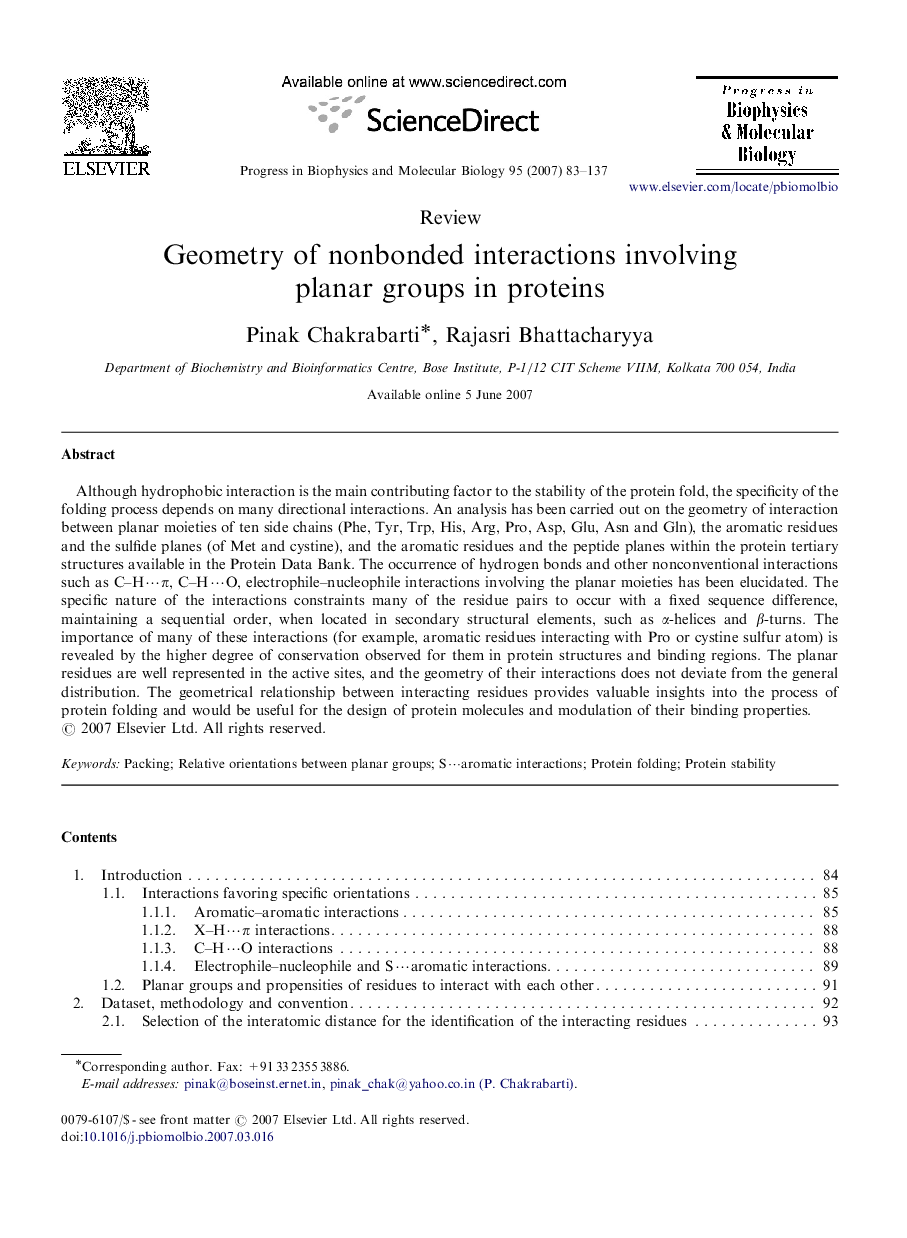| Article ID | Journal | Published Year | Pages | File Type |
|---|---|---|---|---|
| 2070344 | Progress in Biophysics and Molecular Biology | 2007 | 55 Pages |
Although hydrophobic interaction is the main contributing factor to the stability of the protein fold, the specificity of the folding process depends on many directional interactions. An analysis has been carried out on the geometry of interaction between planar moieties of ten side chains (Phe, Tyr, Trp, His, Arg, Pro, Asp, Glu, Asn and Gln), the aromatic residues and the sulfide planes (of Met and cystine), and the aromatic residues and the peptide planes within the protein tertiary structures available in the Protein Data Bank. The occurrence of hydrogen bonds and other nonconventional interactions such as C–H⋯π, C–H⋯O, electrophile–nucleophile interactions involving the planar moieties has been elucidated. The specific nature of the interactions constraints many of the residue pairs to occur with a fixed sequence difference, maintaining a sequential order, when located in secondary structural elements, such as α-helices and β-turns. The importance of many of these interactions (for example, aromatic residues interacting with Pro or cystine sulfur atom) is revealed by the higher degree of conservation observed for them in protein structures and binding regions. The planar residues are well represented in the active sites, and the geometry of their interactions does not deviate from the general distribution. The geometrical relationship between interacting residues provides valuable insights into the process of protein folding and would be useful for the design of protein molecules and modulation of their binding properties.
